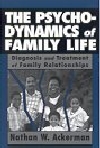This shows that the patient completely misjudges her own situation. To begin with, she is prey to a most disastrous Cartesian dichotomy: she believes that her mind transcends her body and that it grants her unlimited power over her own behavior and that of others. The result is a reification of the "self" and the mistaken belief that the patient is engaged in a victorious battle on two fronts, namely against: (1) her body and (2) the family system.
Now this error could not be called a mental illness, were the patient to adopt it voluntarily and were she to declare quite openly that she will take no food until she gets what she wants. This would constitute a rational choice on her part, not a "mental condition." Instead the anorexic sticks rigidly to the family rule that no one member may assume leadership in his own name. That is precisely why she derives her powers from an abstraction: her illness. It is the latter that wields power, afflicts her own body and makes others suffer for it. Like every mental symptom, the anorexic symptom, too, is a paradox oscillating between two illusory poles: spontaneity and coercion.
This raises the following problem: does the symptom indicate that the patient does not want to eat (spontaneity) or does it rather show that she cannot (coercion)? If we take the epistemological view we have just adumbrated, then we must answer both questions in the affirmative. The anorexic herself, however, insists that only the second alternative is correct, that is that she really cannot eat.
In dealing with such patients, the psychotherapist must therefore pay careful heed to:
- the false epistemology shared by all the family members, that the patient is in unilateral control of the whole system;the patient's belief that her self (or mind) transcends her body and the system, and that she can wage a successful battle on two fronts;the fact that this battle is never waged in the first person, but in the name of an abstraction: the disease for which the patient cannot be held responsible; andthe fact that this abstraction is considered "evil" because it inflicts suffering on all concerned.
The therapist must devise his strategies accordingly and, in particular, he must aim at correcting the false epistemology underlying all these phenomena. But how is he to do that? By academic discussions, by communicating his insights, or by critical remarks? If he takes any of these courses, he will, as we have found to our cost, be sent away with a flea in his ear. What he must rather do is, first of all, reduce all members of the system to the same level, that is assign them symmetrical places in the system. Having observed the prevailing communication patterns, and avoiding the temptation of participating in any of the mutual recriminations, he will make it a point, and one that never fails, to approve unreservedly of all transactional behavior patterns he observes. We refer to this type of intervention as positive connotation, and the therapist must extend it to even those forms of behavior that traditional psychiatry of psychoanalysis pillories as destructive or harmful. Irritated though he may be by overprotectiveness, encroachment, parental fear of filial autonomy, he must always describe them as expressions of love, or of the understandable desire to maintain the unity of a family exposed to so much stress and the threat of dissolution.
In much the same way he must also lend a positive connotation to the patient's symptom. To that end, he will use what material he has collected to prove that the patient keeps sacrificing herself, albeit unwittingly, for a completely unselfish end: the cause of family unity.
This first and fundamental step in the practice of positive connotation is full of implicit messages:
- Thetherapistensuresorconsolidateshissuperiorpositiononthehierarchialscale.Thisisbecause,inWesterncultureatl


 正在提交中...
正在提交中...



